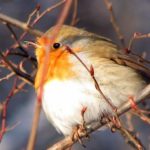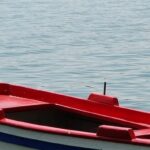
The Acheron River Delta is included in the Natura 2000 program and is an area frequented by more than 100 different species of birds. It’s a wonderful place to encounter the natural habitat of these creatures, and if you’re lucky enough, you’ll spot one of the many raptors such as spotted eagles and hawks that frequent river banks.

The incredible beauty of Lake Ziros is an ideal backdrop for bird watching throughout the area. The large variety of plants, fish and small animals provide an ecosystem which supports a large and diverse population of birds. Throughout the year, spectators may encounter Little Grebes, Night Herons, Cormorants, Gulls and many more species that nest and feed throughout the lake.

Situated on a small hill within walking distance of the eponymous village, the observatory features a telescope allowing visitors to spot one of the many species of birds in the area. Common species here include the Sardinian and sub-alpine Warbler as well as the Roufus Bush Robin. Larger raptors such as the Lesser Spotted Eagle and Marsh Harrier are seen less frequently.

As the largest wetlands area in Greece, the Amvrakikos or Ambracian Gulf supports a diverse eco-system that supports over 290 different species of birds, 75 of which are considered endangered. While several of these live year-round within the marshes of the gulf, the majority spend their winters here or come to mate and raise their offspring.

Much smaller in comparison with neighbouring Vikos Gorge, this canyon has been cut by the Aoos River from where it gets its name. Unlike the Voidomatis River which flows only seasonally through a small section of the Vikos Gorge, the Aoos River has a steady flow throughout the year and runs through the entire Aoos Gorge. Additionally, the river is surrounded by thick vegetation, providing an enchanted walk for those who wish to partake in canyoning through the river.

As the Guinness world record holder as the deepest gorge, the Vikos Gorge belongs on every walker’s itinerary. Due to its relatively untouched natural habitat, the gorge is an area of great interest for researchers, and explorers will have the opportunity to witness several plant and animal species that cannot be found elsewhere. The route is relatively easy and takes most walkers between 5-6 hours to complete. There is a pathway leading down to the gorge just outside of the village of Monodendri. From there, walkers have the option of continuing north, passing the springs of the Voidomatis River and ends at the village of Papingo. The other option is to head south until reaching the stone bridge of Kipi. Whichever route you choose, canyoning through the Vikos Gorge is an experience not to be missed!

The Aoos Gorge is smaller than Vikos Gorge but it still offers bird watchers some great opportunities for spotting large raptors. Aoos Gorge is navigable by foot, and those who walk through it are much more likely to spot one of the many species of eagles, hawks and vultures that inhabit the area.

The spectacular Vikos Gorge is an area of mesmerising beauty and bird watchers will most likely encounter several raptors throughout. There are several lookout points that allow observers to watch without actually descending into the gorge. The best is that at Oxia, which overlooks the deepest section of the gorge. It lies just 3 kilometres outside the village of Monodendri. However, there’s no denying that bird watchers who make the trip through the gorge will be rewarded with viewing various raptors as well as many endangered species of birds.

Ioannina’s location on the banks of Lake Pamvotida has made even the city a place where bird watchers can catch a glimpse of several species. The areas around the lake and on the small island across are known for types such as the Lesser Kestrel, Scops Owl, Penduline Tit, Little Grebe, Pygmy Cormorant and Whiskered Tern.

Near the eponymous village of Lihada lies this cave with a large entrance. Artefacts found in the cave have confirmed it was inhabited as far back as the Prehistoric era.
